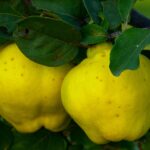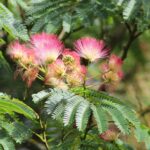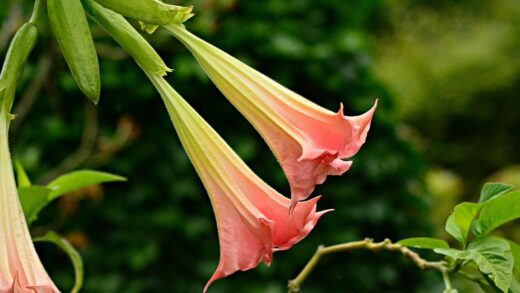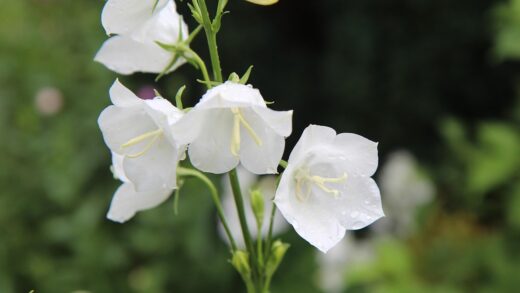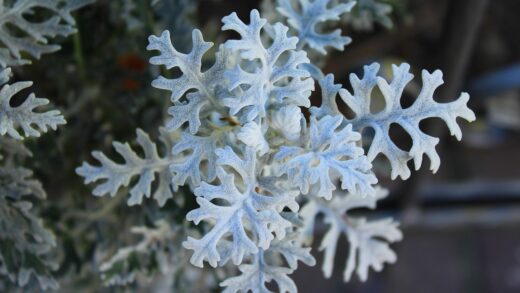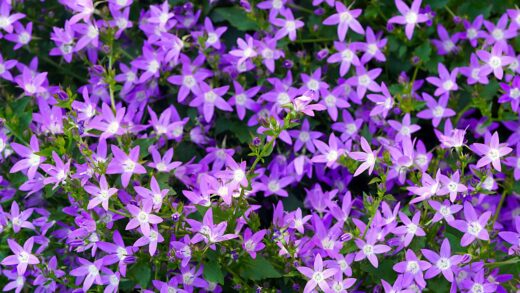Pruning is an indispensable aspect of cultivating the Chinese empress tree, a species whose defining characteristic is its formidable and rapid growth. Without regular and considered intervention, a young Paulownia tomentosa can quickly become an unmanageable and structurally weak giant in the landscape. Strategic pruning and cutting back are not merely for aesthetic purposes; they are essential for directing the tree’s explosive energy towards developing a strong framework, controlling its size, maintaining its health, and even manipulating its growth for specific ornamental effects. Understanding the principles of when and how to prune is therefore fundamental for any gardener wishing to successfully incorporate this tree into their design.
The primary motivation for pruning the empress tree often centers on managing its sheer size and vigor. In a single growing season, a young tree can send up shoots that are several meters long, and it can reach a height of 15 meters or more in less than a decade. This makes it unsuitable for small gardens unless its size is actively controlled through regular pruning. Pruning allows the gardener to maintain the tree at a scale that is appropriate for its surroundings, preventing it from overpowering other plants, interfering with buildings, or growing into utility lines. This control is crucial for the long-term viability of the tree in a typical garden setting.
Beyond size management, pruning plays a vital role in establishing a sound structure, particularly during the tree’s formative years. The empress tree’s wood is known to be relatively soft and brittle, which means that a poor branching structure with weak, narrow-angled branch attachments can be a significant liability. Such branches are prone to splitting and breaking, especially in high winds or under the weight of ice or snow. Formative structural pruning aims to create a single, dominant central leader and a series of well-spaced, wide-angled scaffold branches, resulting in a much stronger and more durable tree.
Finally, pruning can be used as a creative tool to alter the tree’s natural form for dramatic effect. The most striking example of this is the practice of coppicing, where the tree is cut back to near ground level each year. This technique sacrifices the tree’s flowers but stimulates the production of new shoots that bear gigantic, tropical-looking leaves, often reaching 60-90 centimeters in diameter. This allows the tree to be grown as a bold, architectural shrub, providing a stunning foliage accent in a perennial or mixed border. This versatility, unlocked through pruning, is one of the tree’s most exciting attributes.
The best time for pruning
The timing of pruning operations is critical and depends largely on the intended goal. For general structural pruning and size reduction, the best time to act is during the tree’s dormant season, specifically in late winter or very early spring before any new growth has begun. Pruning during dormancy offers several advantages. Firstly, the absence of leaves provides a clear view of the tree’s entire branching structure, making it much easier to identify problems and make well-informed cuts. Secondly, the tree is not actively growing, so the shock of pruning is minimized, and the risk of “bleeding” or excessive sap flow from the cuts is negligible.
More articles on this topic
Pruning in late winter also allows the pruning wounds to begin the healing process immediately as the tree breaks dormancy and enters its most active growth phase in the spring. This rapid callous formation helps to seal the wounds quickly, reducing the window of opportunity for disease-causing pathogens or insect pests to enter the exposed wood. It also means that the tree’s energy reserves, stored in the roots over winter, are directed efficiently into the remaining buds, promoting a strong and healthy response to the pruning cuts when spring arrives.
There is another type of pruning, often referred to as maintenance pruning, which can be carried out at any time of the year. This involves the removal of the “three D’s”: any wood that is dead, damaged, or diseased. This type of corrective pruning should be done as soon as a problem is noticed, regardless of the season. Promptly removing a broken branch after a storm, for instance, prevents the tear from worsening and creates a clean cut that will heal more effectively. Similarly, cutting out a diseased branch can stop the pathogen from spreading to other parts of the tree.
It is crucial to avoid major pruning in the late summer or early autumn. Pruning at this time can stimulate a flush of new growth that will not have adequate time to harden off before the first frosts. This succulent new growth is extremely susceptible to frost damage, which can harm the tree and potentially create entry points for canker diseases. By confining major structural work to the dormant season, you work in harmony with the tree’s natural growth cycle, ensuring its health and resilience.
Techniques for formative structural pruning
Formative pruning is the process of shaping the tree during its first few years of life to establish a strong and permanent framework. This is arguably the most important pruning a tree will ever receive. For the empress tree, the goal is typically to develop a single, straight central trunk (the leader) that extends to the desired height, with a series of well-spaced and strongly attached lateral branches, known as scaffold branches, radiating from it. This structure is inherently stronger and more stable than a tree with multiple competing leaders or a dense cluster of weakly attached branches.
More articles on this topic
In the first year or two after planting, the focus should be on establishing the central leader. If the young tree develops two or more competing upright stems (co-dominant leaders), which often form a weak, V-shaped attachment, you must choose the straightest and most vigorous one to be the main leader and remove the others completely. This prevents the formation of an inclusion of bark between the stems, which is a very common point of failure in mature trees. You should also remove any very low branches to create a clear trunk up to the desired height for clearance under the canopy.
As the tree grows taller, you can begin selecting the main scaffold branches. These should be spaced out both vertically and radially around the trunk. Ideally, you want scaffold branches to be spaced at least 20-30 centimeters apart vertically on the trunk and to be arranged in a spiral pattern, not clustered together at one level or all growing from the same side. This distributes the weight more evenly and allows for better light penetration and air circulation throughout the canopy. Aim to select branches that have a wide angle of attachment to the trunk, ideally between 45 and 60 degrees, as these are much stronger than narrow, upright-growing branches.
When making any pruning cut, it is essential to use sharp, clean tools and to cut in the right place. Branches should be removed by cutting just outside the “branch collar,” which is the slightly swollen area of tissue where the branch joins the trunk. The branch collar contains specialized cells that are responsible for closing over the wound, so it should never be damaged or removed. Conversely, do not leave a long stub, as this will delay healing and can provide a site for rot to begin. For larger branches, use the three-cut method to prevent the weight of the falling branch from tearing the bark down the side of the trunk.
Coppicing for dramatic foliage
Coppicing is a traditional pruning technique that involves cutting a tree or shrub down to a low stool, typically just a few inches above ground level, on a regular cycle. When applied to the Chinese empress tree, this seemingly drastic action produces a stunning ornamental effect. Instead of developing into a large tree, the plant responds by sending up a profusion of extremely vigorous, straight shoots from the base. Because the plant’s energy from its large, established root system is channeled into just a few new shoots, the leaves they produce are enormous, far larger than those on an unpruned tree.
This technique is performed annually in the late winter or early spring, just before new growth begins. Using a sharp pruning saw, the entire growth from the previous year is cut back to the established stool, leaving just one or two buds on each of the previous year’s stumps. The tree will then burst into growth in the spring, rapidly sending up new stems that can reach 2-3 meters in height in a single season. The resulting effect is that of a multi-stemmed, architectural shrub with a bold, tropical appearance, making it a spectacular feature in a border.
Growing the empress tree in this way is an excellent solution for gardeners with limited space who wish to enjoy its magnificent foliage without accommodating a full-sized tree. The annual coppicing keeps the plant to a manageable, shrub-like size. It also allows the tree to be integrated into planting schemes where a large tree would be out of place. The giant, heart-shaped leaves provide a dramatic backdrop for other flowering perennials and shrubs, creating a high-impact visual display from summer through to autumn.
It is important to understand that coppicing means sacrificing the flowers. Since the empress tree flowers on wood that grew in the previous year, cutting this wood off each winter removes all the flower buds. Therefore, this technique is solely for those who wish to prioritize the dramatic foliage effect over the spring floral display. The tree should be allowed to grow unpruned for its first year or two to establish a strong root system before the annual coppicing regime begins. This ensures it has the energy reserves needed to respond vigorously to the hard pruning.
Pruning for rejuvenation and maintenance
Even on a mature empress tree that has been well-structured, ongoing maintenance pruning is necessary to keep it healthy and looking its best. This primarily involves the periodic removal of any dead, damaged, or diseased branches. This type of pruning not only improves the tree’s appearance but is also crucial for its health, as dead or damaged wood can be an entry point for pests and diseases and can pose a safety hazard if it falls. This can be done at any time of year whenever a problem is identified.
Over time, the canopy of a mature tree can become overly dense. Thinning the canopy by selectively removing some of the smaller branches can improve air circulation and light penetration into the interior of the tree. This helps to reduce the incidence of fungal diseases and ensures that the inner foliage receives enough light to remain healthy. When thinning, focus on removing branches that are crossing, rubbing against each other, or growing back towards the center of the tree. The goal is to open up the structure without removing more than 20-25% of the live canopy in a single year.
Sometimes, an older, neglected empress tree may require more significant rejuvenation pruning. This might be necessary if the tree has developed a poor structure with multiple competing leaders or has become too large for its location. This is a more complex task that may involve removing large limbs and should be approached with caution. It is often best to spread this type of heavy pruning over two or three years to avoid overly stressing the tree. For the removal of large, high branches, it is strongly recommended to hire a certified arborist who has the proper equipment and expertise to do the work safely.
Finally, managing the tree’s prolific seed production can be considered a form of maintenance pruning. After the flowers fade, the tree develops clusters of oval-shaped seed capsules. To prevent the tree from self-seeding and potentially becoming invasive, these seed capsules can be pruned off before they mature and release their seeds in the autumn. While this can be a labor-intensive task on a large tree, it is a responsible practice, especially in regions where Paulownia tomentosa has a tendency to escape cultivation and naturalize in the wild.










